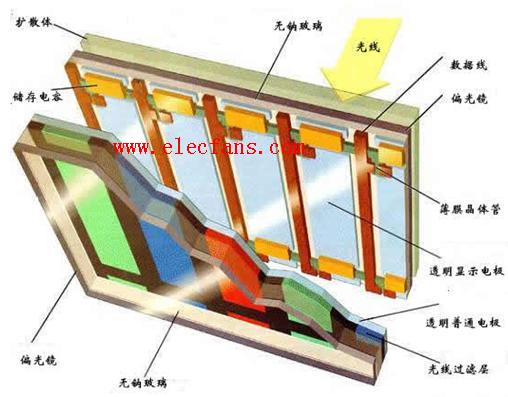In 1970, Fergason manufactured the first practical LCD. Prior to this, LCD has many disadvantages: it consumes too much power, has a short service life, and has low display contrast. It was not until 1971 that LCD was accepted by the public and became popular. The LCD uses a liquid crystal screen to display images. The liquid crystal screen changes the refraction of light by changing the voltage supply to produce a color change. The LCD screen consists of two layers of glass or plastic panels with liquid crystal in between, and light can pass through the panel. After the current is turned on, the liquid crystal can change direction to control the passage of light, so that the liquid crystal can adjust its own color. LCD screens are generally used in portable computers or multimedia projectors. Most flat-panel LCD monitors of desktop computers use LCD technology.
The early LCD screens were unstable and unsuitable for mass production. It wasn't until a British scientist discovered the stable liquid crystal material 'biphenyl' that the LCD technology made a qualitative leap. LCDs are widely used in computers, game devices, and watches.
The current LCD display is popular because of its features of full plane, active matrix, and ultra-thin. The history of LCD has been for 30 years. Due to the slow research and development in the past, LCD monitors are not well received because they cannot provide good image quality. But today, the demand for LCD is increasing and beginning to spread. It is popular with people with beautiful appearance, slim shape, no space occupation and low energy consumption. Now a large number of users with sufficient funds are using it.
There are still many consumers on the sidelines. They are waiting for the price of LCD displays to drop and hope that LCDs can provide better performance in terms of brightness, sharpness and contrast. Only then can they transition from traditional CRTs to LCD displays. Early LCD technology had slow response speed, low efficiency, and low contrast. In addition, the early distance array technology is a passive distance array, which can provide a sharp text display, but after the display of moving objects will leave an afterimage. Today, most black-and-white display notebooks, pagers, and portable phones use passive arrays. Because LCD can provide sharper text and clearer images than CRT.
There are two types of LCDs: DSTN (Double Super Twisted Nematic) and TFT (Thin Film Transistor), which are known as passive and active displays. The LCD has the following layers and is arranged in the following order: polar filter, thin glass plate, electrode, alignment layer, liquid crystal, alignment layer, electrode, thin glass plate, polar filter.

Early notebook computers used an 8-inch passive black and white display. However, the mainstream of LCD displays is developing towards active matrix and large display size. Today's LCDs almost all use TFT panels. TFTs can increase the brightness and maintain a sharp display effect in large sizes.
LCD working principle
The cross-section of a TFT LCD is like many layers of sandwiches stacked together. The outermost layer on each side is a transparent glass substrate with a thin film transistor in the middle. The color filter and liquid crystal layer can display three basic colors of red, blue and green. Usually, there are lights behind the LCD to display the picture.
Generally, as long as the current does not change, the liquid crystal is in an amorphous state. At this time, the liquid crystal allows any light to pass through. After the liquid crystal layer is affected by the voltage change, the liquid crystal only allows a certain amount of light to pass through. The reflection angle of light is controlled according to the liquid crystal. 
When the supply voltage of the liquid crystal changes, the liquid crystal will be deformed, so that the angle of refraction of light will be different, resulting in a change in color. A complete TFT display is composed of many pixels, and each pixel is like a switchable transistor. This can control the resolution of the TFT display. If the resolution of an LCD can reach 1024 x 768 pixels (SVGA), it has so many pixels to display.
Custom Made Neon Lights,Led Light Up Sign,Neon Fluorescent Light,Custom Led Neon
Tes Lighting Co,.Ltd. , https://www.neonflexlight.com